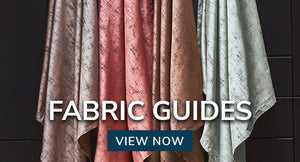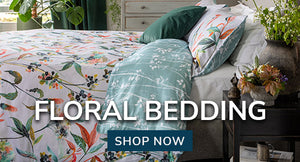How to know if a fabric can be used for upholstery projects
When home furnishings are upholstered, it is the quality and style of the fabric used that is first seen and appreciated. On the downside, it is the upholstery that can be the downfall of your décor when you think how easy it is to become worn down or unclean. It is an important factor then, to not only choose a colour and style that you like - but to choose a fabric which is durable, easy to clean and has good levels of resistance against fading and stains. We introduce you in this post to the fabrics best used in upholstery whether made from natural or synthetic fibres.
How to choose fabrics for upholstery projects
First and foremost, you need to think about how often your upholstered pieces will be used and can you get away with a less durable fabric when it is not used often? Those pieces or areas which get daily wear will find durable, tightly weaved fabrics the best option. When buying fabrics you can actually find out how much thread count it has - a clue to how tightly woven and durable it is, with the higher the count the tighter the weave.
Following is a run down of various fabrics, starting with natural fibres:
Cotton
A good resistance against wear, tear and fading but less resistant to fire and stains. It is possible to have a surface treatment applied which helps to further protect against fire and stains. Different weaves have different levels of durability - try a beautiful Damask fabric on occasionally used pieces and canvas for frequently used furnishings. Cotton is also blended with other fibres to make them more durable and resistant to stains, fire and wear.
Leather
Very durable and hard wearing, can be cleaned successfully using a light vacuuming, damp cloth and special leather conditioners.
Linen
Attracts stains and is therefore better used for 'formal' furnishings within the home, it also has a tendency to crease. It may be a beautiful fabric but it does wear and tear easily, think twice before using it in family rooms are heavy traffic areas. The main advantage is that it is highly resistant to fading. If it needs to be washed, let a professional do it for you to prevent the dilemma of shrinkage!
Silk
Again, silk curtain fabric is beautiful but doesn't hold up well to the elements - use it where you know it won't be tried and tested! A professional wash if stained is advised.
Vinyl
Depends mostly on the quality, but vinyls make a cheap alternative to leather and are good for high traffic areas or family rooms. They are easy to maintain and clean from home.
Wool
Wool is very durable, especially when blended with synthetic fibres which can reduce the 'felt' effect. They have a good resistance to stains, creases and fading. Now let us take a look at some of the synthetic fibres used for upholstery:
Acetate
This is the cheaper alternative to silk but it like silk, it doesn't hold up well to the elements and shouldn't be used for furnishings used on a regular basis. It won't shrink like some natural fibres would and it has a high defence against mould. Wear and tear, fading and stains are still an issue if you choose this fabric.
Acrylic
The wool-imitator, good resistance against wear and tear, stains, creasing and fading.
Nylon
This synthetic is mostly blended with other fibres, but a high contender for being the most durable upholstery fabric available. With high resistance to virtually everything, the only downfall is that it does tend to fade easily.
Polyester
Another fibre that tends to be blended to stop creasing and fading.
Rayon
A very durable fabric that makes a good alternative to wools, cotton and linen - the downfall is that it creases easily. Once you have decided on a fabric to use, browse curtain fabric online which can be used for upholstering projects as well as creating curtains, blinds, cushions and throws!



























































